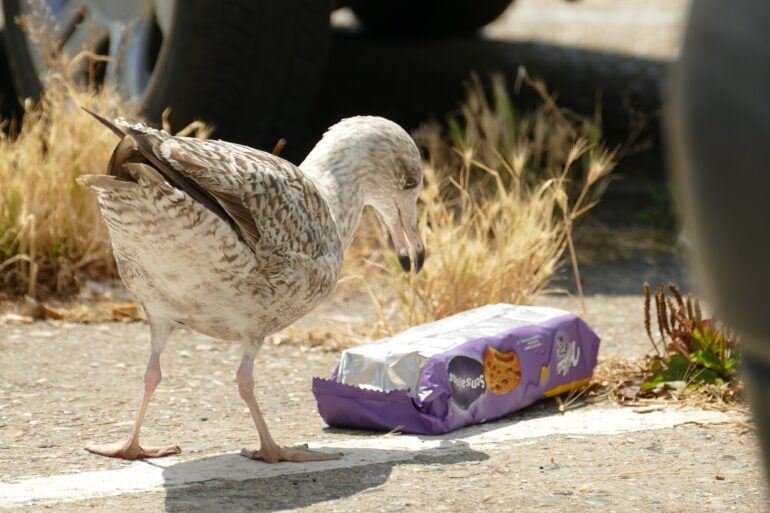TL;DR:
- Plastic pollution poses a global threat, impacting marine birds significantly.
- Over 60% of seabird species have ingested plastic, with a projected rise to 99% by 2050.
- Plastic ingestion leads to various health issues and death in birds.
- Machine learning aids in understanding and addressing this issue.
- It analyzes data to identify patterns in plastic ingestion.
- Computer vision and deep learning simulate bird perception of plastic.
- Machine learning offers insights to reduce plastic’s attractiveness to birds.
Main AI News:
In the realm of environmental concerns, plastic pollution stands as a global menace, leaving an indelible mark on countless creatures, especially marine birds. An extensive study conducted by the University of Tasmania has revealed a startling statistic: over 60% of seabird species have fallen prey to plastic ingestion, with projections indicating a grim ascent to 99% by the year 2050.
The implications of plastic ingestion on these avian beings are multifaceted, encompassing reduced stomach capacity, internal injuries, malnutrition, and the ultimate tragedy, death itself. Understanding why birds succumb to this peril and, more importantly, devising strategies to thwart this phenomenon are paramount questions that have seized the attention of the scientific community.
Innovative Insight Through Machine Learning
Amidst the complexities of studying plastic ingestion in birds lies a conspicuous challenge—limited data. The behavior and dietary habits of wild birds, particularly in remote regions, pose logistical and financial hurdles to comprehensive monitoring. Furthermore, the preferences and risks associated with plastic consumption vary significantly among different bird species, contingent upon their feeding patterns, habitats, and migratory routes.
Enter machine learning, a formidable ally in this battle against plastic pollution. Armed with the ability to decipher vast and intricate datasets, including satellite imagery, GPS tracking, and oceanic currents, machine learning emerges as a beacon of hope. It holds the potential to discern the intricate web of influences that govern plastic ingestion in birds.
For instance, machine learning models can discern regions with elevated concentrations of plastic debris and predict which bird species are most likely to cross paths with these hazardous materials. This predictive power equips scientists and conservationists with targeted insights to optimize their efforts and allocate resources judiciously.
Reengineering the Allure of Plastic
Another conundrum within the realm of plastic ingestion research revolves around unraveling the underlying mechanisms that lure birds to plastic in the first place. Why do these creatures mistake plastic for sustenance, and what qualities render plastic alluring to them? These questions represent an enigma that machine learning, particularly through computer vision and deep learning, seeks to demystify.
Computer vision, a subset of machine learning, empowers computers to process and comprehend visual information, such as images and videos. Deep learning, in turn, harnesses neural networks inspired by the intricacies of the human brain to glean insights from vast datasets and execute intricate tasks.
By employing these tools, scientists can replicate the visual perception of birds and gauge their reactions to diverse forms of plastic. For instance, deep learning models can generate lifelike images of plastic items, varying in shape, color, size, and texture. These simulations facilitate the assessment of their appeal to birds, thereby unlocking a deeper understanding of the cognitive and sensory processes at play in plastic ingestion. Armed with such knowledge, researchers can formulate solutions to diminish the allure of plastic to our feathered friends.
Machine Learning: A Beacon of Hope for Birds and Planet Earth
The perils of plastic pollution extend beyond the realm of mere inconvenience; they pose an existential threat to marine birds’ biodiversity and the overall well-being of our planet. Machine learning emerges as a potent tool to shed light on the root causes and consequences of plastic ingestion in avian populations.
Through innovative applications of machine learning, scientists can embark on a journey to gain fresh insights and knowledge, ultimately yielding innovative and effective strategies to thwart and reduce plastic ingestion. The realm of machine learning stands as a guardian for both our feathered friends and the fragile ecosystems they inhabit, underscoring its capacity to protect and preserve these magnificent creatures.
Conclusion:
The application of machine learning in addressing plastic ingestion in birds signifies a significant step forward in environmental conservation. By deciphering patterns and reducing the allure of plastic, this technology not only protects avian species but also opens avenues for innovative solutions in the market focused on sustainability and biodiversity preservation.

